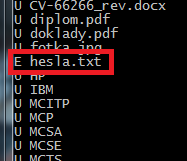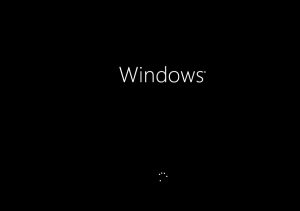If you want to list all encrypted files by EFS you can use command:
cipher [PATH]
This command will list all files in PATH. Encrypted files will have “E” character in front of it:

List encrypted files
This command is great to handle encrypted files. Look at cipher /? command output.
I found great utility builtin Windows Vista and higher. It’s called Problem Steps Recorder. It’s mentioned to use it by users to record their problems and then send recorded screens to Helpdesk/Administrator.
Read more…
Sometimes you need to find out if your windows is activated and quickes way to do so is to run command:
slmgr /dli
This command can also do
- /ipk <Product Key> – Install product key (replaces existing one)
- /ato [Activation ID] – Activate Windows
- /dli – Display license information
- /dlv – Display detailed license information
- /xpr – Expiration date for current license state
- …AND MANY MORE
For full help use slmgr /?.
Once upon the time I played with enterprise certification authority at one of our customers. I’ve created new certificate for certification authority. And then problem begun.
Read more…
One my colleague wanted to make one of our customer’s environment very secure so he decided to install Enterprise Certification Authority environment with 4kB keys. He created one offline root CA with 4kB key (Windows 2003). This computer is offline all the time. Another CA is Issuing CA which key is signed by root CA. This issuing CA also had 4kB key (Windows 2008 R2). Certificates issued by issuing CA were from 2kB-16kB.
Problem raised when customer wanted to create certificate for Cisco devices to secure Wifi. To make those devices use and trust certificates from issuing CA customer needed to import Root and Issuing CA public certificates into those Cisco devices. And this was a problem. Those Cisco devices didn’t want to work with more than 2kB certificates.
Read more…
Categories: Security, Windows Tags: capolicy, capolicy.inf, certificate, certification authority, decrease, key, lenght, renewalkeylenght, size, Windows
We had project replacing SAN switches. Customer has one old HP-UX (HP Unix) system. This system is very sensible about SAN changes.
Normal situation
You can see all hardware using command (http://www.bga.org/~lessem/psyc5112/usail/man/hpux/ioscan.1.html):
ioscan -fnC
Read more…
Today we tried to run Windows Server 2012 RC on VMWare. Our version of OS on VM was set to Microsoft Windows Server 8.
After first reboot after installation we got black screen with little circles going around forever:

Never ending cycling
We couldn’t make it work. But we found solution. Just change OS Version of VM to Microsoft Windows Server 2008 R2 (64-bit).
For Windows 8 it is required to change OS Version to Windows 7. Thanks to Róbert Švec.
We hope VMWare will fix this soon 🙂
Today I was asked to find out why some users gets Out of office message subject in Slovak language and some in English. Company has two Exchange 2003 servers. One is for Front-end and second is to host mailbox databases.
Read more…
Today one of our customers called me and asked how they can prevent from receiving e-mails from Internet for particular distribution group. They have Exchange 2010 SP2. I instructed him to check field on properties of distribution group called Require that all senders are authentificated.
Read more…
Categories: Exchange, Security, Windows Tags: authentificated, connector, exchange, externally secured, legacy exchange, receive, relay, require, users
When I want to feel like guru or I just need to use some Unix based utilities in Windows, I used to install http://www.cygwin.com/. It’s cool. But I recently found out that Windows has native support for Unix based applications.
Read more…


Recent Comments